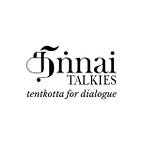Documenting in times of conflict.
In 2019 I came across an article about the Museum of Material Memory. It is a digital repository of Indian Materialistic culture. You’ll find old books, personal diaries, household items made of brass and copper, maps, documents, jewellery and so many more things. All of them collected safely and passed down from one generation to another. This digital museum didn’t just take the antique pieces as they come, but understood the story each one had to tell the world. On their web page, some days you’d read about passports from the 60s, hastily written love letters left unsent, antique spoons and forks and on other days you’d read about unpublished books of rebellion and how a pair of earrings, separated and chiselled in the corners found themselves on two different sides of a border after independence.
These objects are interesting to me for the stories they hold and for being important remnants of great historical occurrences. Again, these objects ended up as documentaries about conflicts, heartbreaks, separation, war and dissent before the 70s when the digital revolution was yet to happen.
Today we associate a lot of incidents of violence and unrest with the images we look at on television and social media apps. We recognize the enormity of a conflict based on media portrayal. In the past only memory and small bits and pieces of what people carried with them were evidence of difficult times. But the emergence of these photographers and widespread coverage of wars hasn’t stopped us from holding onto valuable items like in the 70s. Documenting is a natural instinct that takes different forms at different times. In a conflict, although it’s not the first thing on our minds, we realize at some point how necessary it is.
A 2020 Time magazine cover had a photograph of the civil rights movement from 1968 captioned — what has changed and what hasn’t. The photographs from the 1968 movement, compared with those of today, are so significant because they contribute to the movement in more ways than one can imagine. For a lot of people who don’t have proper understanding of conflicts, documenting is a way to grasp. Eight thousand miles away from the protests in the USA, these images, videos, movies have been documentaries for us in India. And when it’s the 1968 photograph in 2020 March, you remember it longer than others.
For the longest of time people behind the documentation of conflicts have been the ones who’re powerful and had an unfair advantage over the others. We see a stark contrast of that in 2020. People want to call out mainstream documentation of unethical practices or rosy gardens and sunsets that political institutions try to propagate. Directors want to capture concentration camps, LGBTQA+ community struggle, Kashmir conflicts, etc. They want to document BOTH– who the fight is against AND who the fighters are.
Documenting in time of a conflict — be it a diary during the Holocaust, holding on tight to a valuable bracelet or a 21st century journalist’s attempts, they all show us moments of strength, fear and vulnerabilities. It is these remains that centuries from now, people will hold onto because when they’re amidst another battle these documentaries are evidence that they are not alone during hours of struggles or in times of a conflict.
By Anjali Bodempudi
Anjali Bodempudi is a media and communications student. She hopes to combine her interest in the fields of media and humanities one day.
